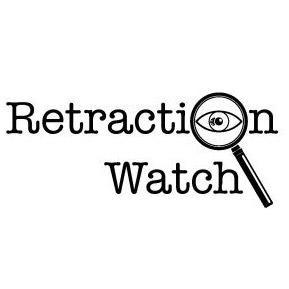We reached two milestones this week at Retraction Watch.
Our database — the most comprehensive source for retractions by a wide margin — surpassed 25,000 retractions. And our list of retracted COVID-19 papers, which we’ve maintained for a year, grew past 100 for the first time.
When we launched Retraction Watch in 2010, we, along with many others, thought retractions happened only dozens of times per year. We were wrong, and soon learned that figures had doubled in the first decade of this century, and that no one was keeping close track. The idea for the database was born several years later.
Readers may recall that when we launched the database in October 2018, it contained 18,500 retractions. That means we’ve found, checked, categorized, and entered some 6,500 retractions in two and a half years. New last year: The ability to include retractions in any language.
That effort powers our partnership with Zotero that automatically alerts users to retractions in their database. It also allows us to make the database freely available to scholars and others who want to investigate retractions and related issues in scientific integrity.
The COVID-19 list — used frequently by researchers as well as journalists — grew from 90 to 117 this week, thanks to dozens of retractions by a single author with a penchant for Star Trek.
This kind of rigorous and daily work all costs money to produce. There is always more to do — more retractions to find and categorize, more public records requests to file, more documents to pore over.
We’re grateful to the organizations that have generously supported our staff and reporting efforts, such as the John D. and Catherine T. MacArthur Foundation, the Laura and John Arnold Foundation, and the Leona M. and Harry B. Helmsley Trust. But those grants have come to an end, and we now rely on earned revenue — for example, honoraria and freelance writing fees — as well as individual donations.
We know there are a lot of causes that matter to you, but since you’re reading this, we may be one of them. So we’d like to ask for your support.
Please consider making a tax-deductible contribution to The Center For Scientific Integrity, the 501(c)3 parent organization of Retraction Watch. Any amount helps. Your donation will help us shine a spotlight on scientific misconduct, and on the process — too often messy and slow — of correcting the scholarly record.
Of course, if you don’t have the means to support our work financially, we always benefit from story tips, comments that add context and extra information to a post, and other feedback. Together, we can improve the process of self-correction.
For more on how we make use of those funds, we have posted all of our tax returns here. For more than three years, I have not taken any salary, and that will continue as long as necessary to ensure our sustainability.
Ready to help? Make a one-time donation or a monthly contribution through PayPal or GoFundMe. If you’d rather mail a check, please make it out to The Center For Scientific Integrity and send it to 121 W. 36th St., Suite 209, New York, NY 10018.
And thank you.


Congratulations! Unfortunately, I suspect that the rate of growth of this database will only increase, not decrease…
Does this mean our media is not in search of the truth anymore?
Bravo!
Impressive work.
Curious that “apologies” (e.g., “I regret saying those terrible things . . . ” or “I’m sorry I brought a loaded gun into a bar and was caught” or “As a law enforcement officer/lawyer/judge/etc I am ashamed that I did that”, et al.) aren’t included in your list of retractable articles. These days, that could qualify for its own website.
Thanks for the update and for the hard work you all do at RW.
Anyone want to go in on a betting pool as to how long in days RW will reach 30,000 entries? The winner will be the one coming closest in days. The prize? A monetary donation to RW. 😊
Here is my entry: 700 days.
Retracted papers are not harmful anymore and possibly not more than 1% of problematic papers. The rest 99% are the real problem.